|
INDICTMENT AGAINST SRI LANKA
The Charge is Ethnic Cleansing
 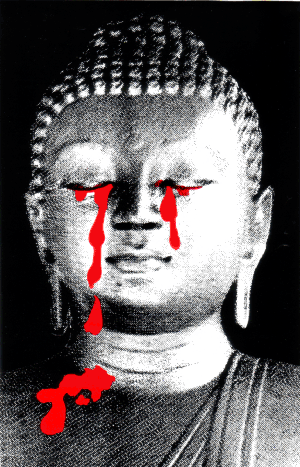
|
".... suffering in common unifies more than
joy does. Where national memories are concerned, griefs are of more value than
triumphs, for they impose duties, and require a common effort.
A nation is
therefore a large-scale solidarity, constituted by the feeling
of the sacrifices that one has made in the past and of those
that one is prepared to make in the future..."
What is a
nation? - Ernest Renan, 1882
|
Nadesan Satyendra
 Ethnic
cleansing is a crime against humanity. Ethnic
cleansing is about assimilating and digesting a people. It is about destroying the
identity of a people, as a people. And in the case of Sri Lanka the
theoretical frame was articulated with clarity in
July 2009 by Sri Lanka President Mahinda Rajapaksa - Ethnic
cleansing is a crime against humanity. Ethnic
cleansing is about assimilating and digesting a people. It is about destroying the
identity of a people, as a people. And in the case of Sri Lanka the
theoretical frame was articulated with clarity in
July 2009 by Sri Lanka President Mahinda Rajapaksa -
�Now, my theory is: there are no minorities in Sri Lanka,
there are only those who love the country and those who don�t...
For reconciliation to happen, there must be a mix [of
ethnicities]. Here the Sinhalese, the Tamils, and Muslims
inter-marry. In my own family, there have been mixed marriages:
Sinhalese with Tamils, Sinhalese with Muslims. This is Sri
Lankan society..."
Sri Lanka President Rajapaksa's
Theory of Reconciliation: Intermarriage, 7 July 2009
Given
President
Rajapaksa's genocidal record, it seems that his theory of
reconciliation may be simply stated: kill off
as many Tamils as you can and then marry those that
you have failed to kill.
Ethnic cleansing often occurs in stages .
The preferred route of a conqueror is to achieve his objective
without resort to violence - peacefully and stealthily. But when
that fails,
the would be conqueror turns to murderous violence and genocide
to progress his assimilative agenda. Genocides do not just happen.
And Sri Lanka is no exception to these general
rules.
In the island of Sri Lanka, the
record shows that during the past sixty years and more, the intent and goal of all Sinhala governments
(without exception) has been to secure the island
as a Sinhala
Buddhist Deepa.
"...One of the essential elements that must
be kept in mind in understanding the Sri Lankan ethnic conflict is that,
since 1958 at least, every time Tamil politicians negotiated some sort
of power-sharing deal with a Sinhalese government - regardless of which
party was in power - the opposition Sinhalese party always claimed that
the party in power had negotiated away too much. In almost every case -
sometimes within days - the party in power backed down on the
agreement..." -
Professor
Marshall Singer, at US Congress Committee on International Relations
Subcommittee on Asia and the Pacific Hearing on Sri Lanka November
14,1995
The current Sri Lanka President Mahinda
Rajapaksa is simply the latest in a long line of leaders of the Sinhala Buddhist nation,
a nation which dare not speak its name.
It is a Sinhala Buddhist nation which seeks to masquerade as
a multi
ethnic 'civic' 'Sri Lankan' nation albeit with a
Sinhala Lion flag , with an unrepealed
Sinhala
Only Act, with
Buddhism as the state religion, and with the Sinhala name
'Sri Lanka' which it
gave itself
unilaterally in 1972 .
"...In the Sinhala language, the words for nation, race and people
are practically synonymous, and a
multiethnic or multicommunal
nation or state is incomprehensible to the popular mind. The
emphasis
on Sri Lanka as the land of the Sinhala Buddhists carried an emotional popular appeal,
compared with which the concept of a multiethnic polity was a meaningless
abstraction..." [Sinhala Historian K. M. de Silva in Religion, Nationalism and
the State, USF Monographs in Religion and Public Policy, No.1 (Tampa, FLA: University of
South Florida 1986) at p31 quoted by David Little in Religion and Self Determination in
Self Determination - International Perspectives, MacMillan Press, 1996]
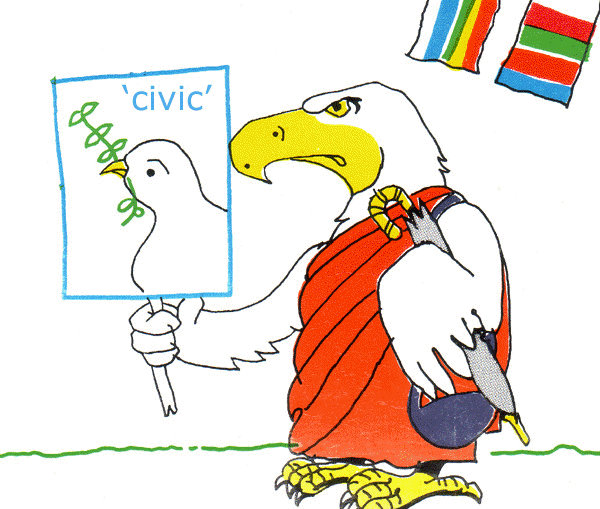
The Sinhala Buddhist nation
masquerading as a multi
ethnic 'civic' 'Sri Lankan' nation set
about its task of assimilation and 'cleansing' the island of
the Tamils, as a people, by
- depriving a section of
Eelam Tamils of their citizenship,
- declaring the Sinhala flag as the national
flag,
- colonising parts of the Tamil
homeland with Sinhala people,
- imposing Sinhala as the official language,
- discriminating against Tamils students seeking University
admission,
- depriving Tamil language speakers
of employment in the public sector,
-
dishonouring agreements entered into with the Tamil
parliamentary political leadership,
- refusing to recognise
constititutional safeguards against discrimination,
- later
removing these
constitutional safeguards altogether,
- giving to themselves
an authocthonous
Constitution with a
foremost place
for
Buddhism,
- and
changing the name of the island itself to the
Sinhala Buddhist name of Sri Lanka - appropriately enough, on
the 'tenth day of the waxing moon in the month of Vesak in the year
two thousand five hundred and fifteen of the Buddhist Era'.
When the attempts at ethnic cleansing by Sinhala majority
governments (within the confines of a single state) were resisted by the
Tamil people by
non
violent means and
parliamentary struggle,
Sinhala governments resorted to violence in
1956, in 1958,
in 1961, in
1974, and again in
1977 - a murderous
violence directed to
terrorise the Tamils into submission.
Rule by a permanent ethnic majority within the confines of a single
state was and is the
dark side
of democracy.
The inevitable rise of
Tamil
armed resistance to State terror
was then met with enactment of laws which were an
'ugly blot on statute book of any civilised
country', with arbitrary arrest and
detention, torture,
extra judicial killings and massacres,
indiscriminate aerial bombardment and artillery shelling,
wanton rape,
and by genocide
in 1983 and thereafter - together with
press censorship, disinformation
and murder of journalists. And
the impunity granted to Sinhala
armed forces,
para
military groups, goondas and
Sinhala thugs, exposed the encouragement, support and direction
given by successive Sri Lanka governments for the crimes committed
against the Tamil people.
In 1987, at the invitation of Sri Lanka President
J.R.Jayawardene, Indian
Prime Minister Rajiv
Gandhi sent the Indian Peace Keeping Force to subdue Tamil
resistance to alien Sinhala rule.
"Over a period of about 20 days
(commencing 9 October 1987) , the Indian Army's direct
attack on LTTE positions, and defence from LTTE attacks,
was coupled with the Indian Army's attack and storming
of still unevacuated Jaffna - and many villages and
settlements throughout the Peninsula - with widespread
(insofar as territory), indiscriminate (insofar as
targetting) and sustained (insofar as intensity)
artillery shelling. Only less widespread, sustained and
indiscriminate, there was air-strafing from helicopter
as well. It was not "cross-fire" that incidentally
killed thousands of civilians.
The majority were
killed unavoidably inside their houses and huts under
shelling, or were shot at random by the roads and on the
streets. A large number of people were "only"
wounded - yet, many of them died in the absence of
medical care, especially under the 24-hour curfew over a
period of about one month, to mid-November. ....On top of everything else there
has been the "unmilitary" or "unsoldiery" side of events
:- wanton killings out of rage, reprisals
against non-combatants, looting of homes of middle
and wealthier classes, soldier's assault of women,
a
murderous attack on the main hospital
victimising both patients and medical personnel, and
killing of a number of unarmed and disarmed guerrilla
suspects without trial according to the Law of War."
Eduardo Marino, Report to International Alert
- Some Observations and Conclusions
following a trip to Jaffna Peninsula in November 1987
After
the IPKF left in 1989
Sinhala President Ranasinghe Premadasa renewed the attacks on
the people of Tamil Eelam with vigour in1990. In September
1990,
Amnesty launched a 3 month campaign against state
terror in Sri
Lanka. During the period 1990 to
1994, Tamils were attacked in the
East, in
Kannapuram. 180 Tamils were butchered at
Saththurukondan.
Hundreds of Tamils 'Disappeared' after
detention. Tamils in the North were bombed.
Over 1,000 Tamil civilians
were
killed in the three years bombing of Jaffna. Jaffna Hospital and other Tamil civilian centres
were bombed. Tamil detainees were systematically tortured.
Following upon Sinhala President Premadasa's terror, the new
Sinhala President
Chandrika Kumaratunga Bandaranaike continued the genocidal
attack on the people of Tamil Eelam in the years 1995 to 2001. The genocidal intent of the
Chandrika led Sri Lanka government was proved by -
Thereafter the period 2002 to 2007 (under the dispensation of
Sinhala
President Chandrika Kumaratunga Bandaranaike & Sinhala Prime
Minister Ranil Wickremasinghe and later Sinhala President
Mahinda Rajapaksa) witnessed Sri Lanka's undeclared war on the
people of Tamil Eelam under the shadow of the 2002 cease fire
agreement. It was an undeclared war which witnessed the massacres at
Vaharai,
Vankalai,
Pessalai,
Trincomalee,
Vallipunam,
Padahuthurai,
Killinochchi
and
Muthur. It was an
undeclared war which witnessed the murder by Sri Lankan state
agencies of a growing number of Tamil intellectuals -A.Nadesan,
J.Pararajasingham,
D.Sivaram,
C.Nehru,
P.Ganeshamurthy,
V.Vigneswaran,
N.Raviraj,
Sivamaharajah
amongst others.
In 2005, upon his election as the new Sri Lanka President, Mahinda Rajapakse pursued the Sinhala assimilative agenda by
reneging on the 2002 Oslo Declaration, and by refusing to recognise
the existence of the
Tamil homeland.
Finally, in January 2008, the Sri Lanka government
unilaterally
abrogated the
ceasefire agreement which it had solemnly entered into in
February 2002 and which agreement had received internationally
recognition.
The genocidal intent of the
President Rajapakse government was reflected
in the war crimes
committed by the Sri Lankan armed forces under the President's
command and by the Sri Lanka para military. They have
raped,
murdered Tamil
Parliamentarians, Tamil
journalists,
executed
Tamil students with impunity,
arbitrarily arrested and detained Tamil civilians, abducted
Tamil refugee
workers, orchestrated
attacks on Tamil civilians and Tamil shops,
bombed Tamil
civilian population centres and
displaced thousands of Tamils from their homes.
And after the Tamil armed resistance silenced its guns on the 17 May
2009, the Sri Lanka regime under
Sinhala President
Rajapaksa has continued its allotted task of ethnic cleansing
with
Tamils languishing in Sri Lankan
death camps, and with
the hidden
massacre of tens of thousands of Tamil civilians .
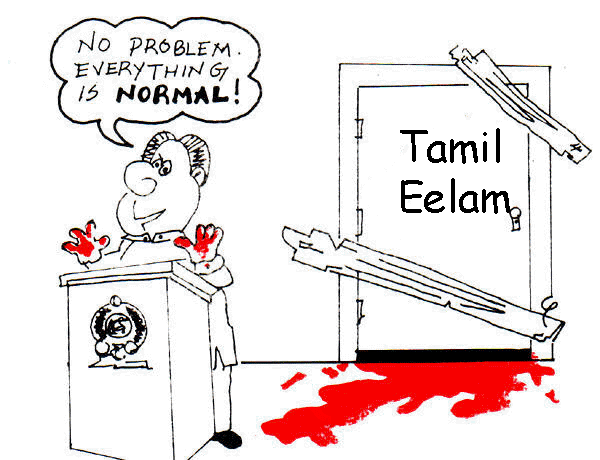
The Record Speaks...
The gross, consistent, and continuing violations of the
rights of the Tamil people, by the Sri Lankan government and its
agencies during the past several decades, include grave breaches of
the Universal Declaration of Human Rights, the
International Covenant on Civil and Political
Rights, the
Genocide Convention, and the
Geneva Conventions relating to the humanitarian
law of armed conflict.
These violations by Sri Lanka have been well documented by
several human rights organisations and independent observers as well
as by eye witnesses - and have been the subject of
hundreds of statements and
interventions at the United Nations Commission on Human Rights.
This publication brings together extracts from
some of these reports - including those that cover
Genocide '58,
Genocide'83 ,
Rajiv Gandhi's War Crimes, the
Genocidal War '95 to '01,
Sri Lanka's
Undeclared War
on Eelam Tamils in the Shadow of a Ceasefire '02 to '07,
Sri Lanka's
Genocidal War '08
...after Abrogation of the Ceasefire and after the Tamil armed resistance
ended on 17 May 2009, Sri Lanka's Continued Ethnic
Cleansing
2009...
|
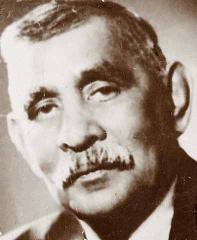 |
Sinhala Prime Minister
D.S.Senanayake...
|
|
 |
Sinhala Prime Minister S.W.R.D. Bandaranaike...
"What are we left with (in 1958)? A nation in ruins, some grim lessons which we
cannot afford to forget and a momentous question: Have the Sinhalese and Tamils reached
the parting of ways?"
Tarzie Vittachi: Emergency 1958
|
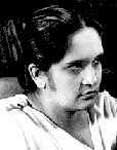 |
Sinhala Prime Minister Srimavo Bandaranaike... |
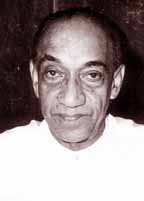 |
Sinhala Prime Minister/President J.R.Jayawardene...
"Clearly
this was not a spontaneous upsurge of communal hatred among the Sinhala people.. It was a
series of deliberate acts, executed in accordance with a concerted plan, conceived and
organised well in advance. But who were the planners?... Communal riots in which Tamils
are killed, maimed, robbed and rendered homeless are no longer isolated episodes; they are
beginning to become a pernicious habit."
Paul
Sieghart Q.C. Report of a Mission to Sri Lanka on behalf of
the International Commission of Jurists, March 1984
"A government spokesman
has denied that the destruction and killing of Tamils
amounted to genocide. Under the Convention on the Prevention
and Punishment of the Crime of Genocide, acts of murder
committed with intent to destroy, in whole or in part, a
national, ethnical, racial or religious group as such are
considered as acts of genocide. The evidence points clearly
to the conclusion that the violence of the Sinhala rioters
on the Tamils amounted to acts of genocide."
- Chunnakam massacre and extra judicial killings of
Tamils - 1984
- Events affecting the Judiciary - 1977 to 1984
- The plea that went unheeded - K.V.Nadarajah,
August 1984
- Case Study of Torture, Sri Lanka Style - 1984
- Sri lanka Army terrorises another
Jaffna school - November 1984
- Sinhala army murders Christian priests -
1984/85
- Arbitrary killings and torture - 1985
- Synopsis of extra judicial killings by an
independent law group - 1979 to May 1985
- Sri Lanka Navy murders passengers on Kumithini -
May 1985
- Amnesty Reports on 163 Extra Judicial
Killings of Tamils in May 1985
-
An Episode of Persecution - Paul Nallanayagam on
Special Task Force and Extra Judicial Killings
- The Massacre in Tiriyai - the village that died on
15 June 1985
- 52 Tamil villages in Trincomalee area razed to the
ground in two months - September 1985
- Amnesty File on Sri Lanka Torture - October
1985
- Amnesty confronts Sri Lanka's denial of torture -
December 1985
- Iruthayapuram Massacre: eye witness account -
January 1986
- Akkaraipattu Massacre & Arbitrary killing of
Tamils - 1986
- The Kokkadaicholai Massacre - 1987
- Security forces continue to kill, chain and
incarcerate non combatant Tamils - 1987
- UN Commission on Human Rights calls for Red Cross
intervention - 1987
- Indian army intervenes at invitation of Sri Lanka
government - 1987
-
Rajiv
Gandhi's War Crimes
"...as an Indian I feel ashamed that under the
Indo Sri Lanka agreement, our forces are fighting
with Tamils whom they went to protect..."I believe that the Indian Government had betrayed its own culture and
ethics...The guilt, therefore, rests entirely on those who sent them to do this dastardly
business of fighting in Sri Lanka against our Tamil brothers and sisters..."
India's
former Foreign Secretary, A.P.Venkateshwaran, speaking in London in
April 1988
- Thileepan's fast - and Jaffna, September to
November 1987
- Two Harrowing Weeks in Jaffna -
September/October 1987 - An Eye Witness Account
-
Velupillai
Pirabakaran On the Arrrest & Death of Kumarappa, Pulendran and Others
-
India Must Stop Repression of Tamils
-
N. Sanmugathasan
-
Tamils Killed and Injured
by Indian Army in Jaffna
between 10 - 16 October, 1987
-
The Agony of Urumpiray
-
Diwali Day massacre at Jaffna General Hospital -
November 1987
- People Face
Starvation & Slow Death - Citizens Committee to Indian Prime
Minister
-
Case of a Mother and Son murdered in
cold blood by IPKF
-
India's war in Jaffna - Eduardo Marino's Report to
International Alert
- Indian army's war crimes - 1987
- Rape of Tamil women by Indian Army - 1987/88
-
3000 Civilians Forced by IPK to
Squat under Scorching
Sun for Nine Hours - 1988
-
Annai Poopathy's fast for freedom - 1988
- Detention without Trial, Torture - 1988
- Torture & Reprisal attacks by India and Sri
Lanka - 1989
- India's My Lai - the Valvettiturai Massacre -
1989
|
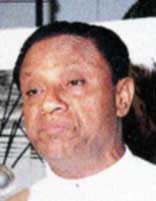 |
Sinhala President Ranasinghe Premadasa...
- Sri Lanka's Deputy Defence Minister on the rule of
law, 1990
- Kannapuram Massacre, July 1990
- Planned genocidal attack on Tamils in the East -
1990
- 180 Tamils butchered at Saththurukondan -
September 1990
- Hundreds of Tamils 'Disappear' after detention by
Sri Lanka - 1990
- Sri Lanka bombs Jaffna Hospital & other Tamil
civilian centres - 1990
- Calculated disinformation campaign by Sri Lanka
government
- Amnesty launches 3 month campaign against Sri
Lanka - 19 September 1990
- Thousands of Tamils extra judicially executed says
Amnesty - 1990
- Tamil detainees systematically tortured -1991
- Kokaddicholai massacre - June 1991
- On the use of Governmental Aggression to Suppress
a Minority's Quest for Self Determination - Deanne Hodgin, July
1991
- Human Rights violations continue at 'an alarming
rate' - 1992
- India's Act of Piracy,
January 1993
-
New spate of disappearances & extra judicial
killings - 1993
- The torture of Arulapu Jude Arulrajah - October
1993
- Over 1,000 Tamil civilians
killed in the three years bombing of Jaffna says British Refugee Council, July
1993
- 200 Tamils civilians killed in air
and navy attacks in 1993 alone, September 1993
-
"This is organised State terrorism" say
Bishop
D.J.Ambalavanar, Bishop Thomas Saundranayagam
,
and Nallai Thiru Sampandar Atheenam
- Churches and Temples Bombed,
January 1994
- Sri Lanka airforce strafes Tamil villages
- Sri Lanka Airforce Bombs Schools in
Jaffna
- Sri Lanka Airforce targets Tamil civilian population,
March 1994
-
Hospitals bombed in Tamil Homeland
|
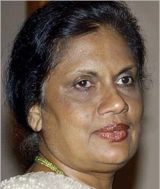 |
Sinhala Prime Minister/President Chandrika Kumaratunga
Bandaranaike...
The genocidal intent of the Sri Lanka government is proved by
-
Sinhala President Chandrika Kumaratunga Bandaranaike &
Sinhala
Prime Minister Ranil Wickremasinghe...
" A strange low intensity war has been unleashed against us
taking advantage of the conditions of peace effected by the
ceasefire. Disarming the Tamil para-military groups
is an
obligation of the state under terms of the
Ceasefire Agreement.
Having failed to fulfil this crucial obligation the Sri Lanka
state has been utilising the Tamil para-militaries as
instruments of this subversive war against our liberation
organisation. This is a serious war offence. This is similar to
a treacherous act in which one stabs you in the back with one
hand while pretending to embrace you with the other.."
Velupillai Pirabaharan
- Maaveerar Naal Address, 27 November 2005
|
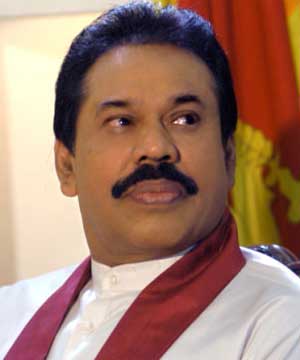 |
Sinhala President Mahinda Rajapaksa...
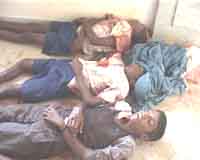 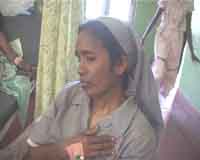 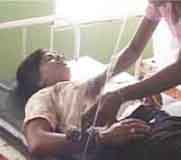
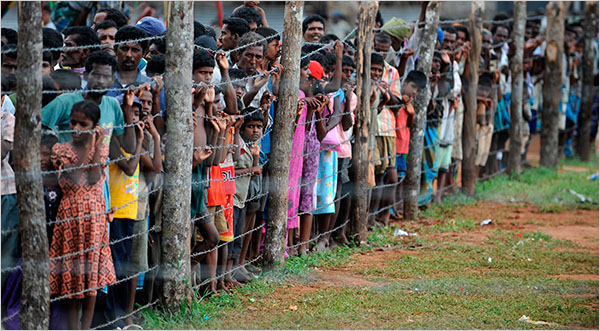
|
 |